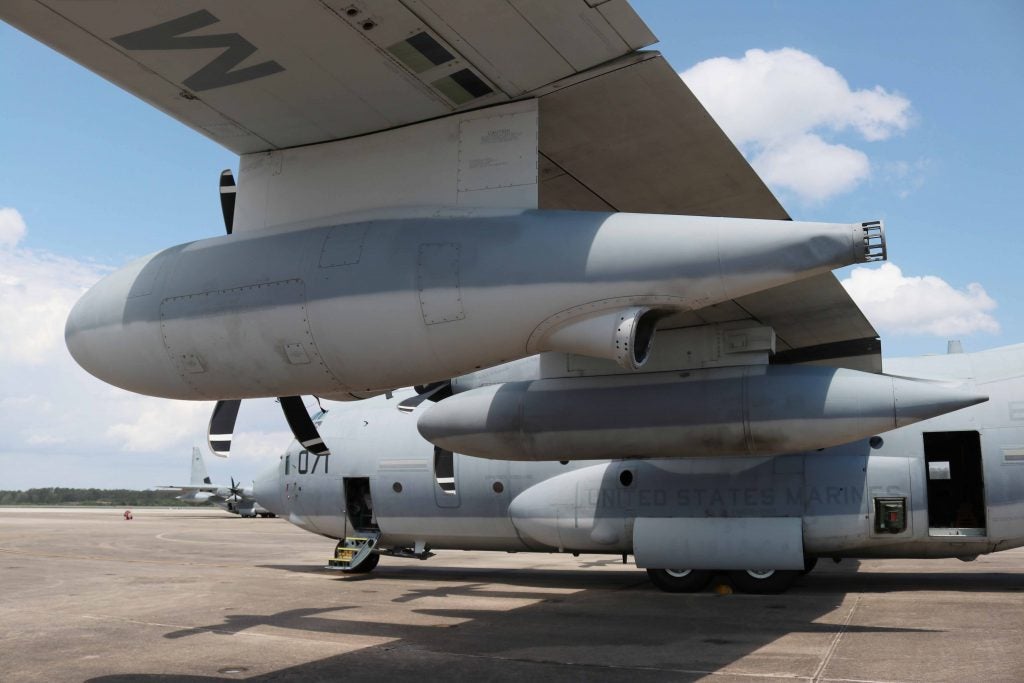Researchers Explore Opportunities at Air Station
ECU researchers received a tour and overview of Marine Corps Air Station Cherry Point on April 26, opening the door for new research opportunities with the air base.
The group took a tour of a KC-130 tanker aircraft designed for aerial refueling, after receiving a briefing from MCAS Cherry Point Commanding Officer Col. Todd Ferry. Ferry discussed the economic impact of the air station – $2 billion per year to the region – and potential research collaborations in the areas of wind energy, family education materials, capacity for preplanning projects, and public private partnerships.

The KC-130 tanker aircraft is designed for aerial refueling.
The group also toured the North Carolina Fleet Readiness Center East. The center serves as an aviation and repair maintenance facility for the air station and is one of seven subsidies of the Navy’s Fleet Readiness Center Command. Center representatives and ECU researchers discussed possible collaborations on workforce preparedness and parts development and production.
Authorized in 1941 and commissioned a year later, MCAS Cherry Point has served the U.S. military for more than 70 years. Named after a tiny 19th-century settlement area along the Neuse River, construction began with a $14.9 million appropriation for an air station covering 8,000 acres of swamp, farm and timberland. Since its construction, MCAS Cherry Point has provided support for every major U.S. military operation, from World War II to Operation Iraqi Freedom.
MCAS Cherry Point and its associated support locations cover nearly 29,000 acres and serves as one of the best all-weather jet bases in the world. The air station is home to the 2nd Marine Aircraft Wing, including sub-squadrons Aircraft Group 14, Aircraft Control Group 28, and 6th Special Security Communications Team; Combat Logistics Company 21; and the Marine Fleet Readiness Center East. The air station’s most recognizable feature is its four-point runway system. The system provides multiple approach and departure advantages to aviators. The system’s runways are so long that in the past they’ve been used as alternative emergency landing sites for NASA’s space shuttle program.
Today, more than 53,000 people make up the total MCAS Cherry Point population, including active duty and retired Marines, civilian workers, and family members.
